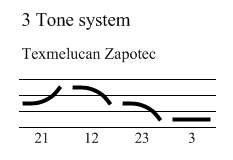Zapotec civilization






Zapotec civilization was an indigenous pre-Columbian civilization that flourished in the Valley of Oaxaca in Mesoamerica. Archaeological evidence shows that their culture goes back at least 2,500 years. The Zapotec civilization has been credited with many innovations in Mesoamerican culture, including the development of a hieroglyphic writing system and a calendar system, as well as advancements in architecture, astronomy, and mathematics.
Origins and Development[edit]
The origins of the Zapotec civilization are not entirely clear, but it is believed that they developed from the pre-existing cultures in the region around the beginning of the first millennium BCE. The Zapotecs were contemporary with other major Mesoamerican civilizations such as the Maya and the Teotihuacan.
Society and Culture[edit]
Zapotec society was highly organized and stratified. At the top of the hierarchy was the ruling class, which was composed of priests and nobles, who wielded significant religious and political power. The Zapotecs were polytheistic, worshipping a pantheon of gods, with a particular emphasis on ancestor worship and the cult of the dead.
The Zapotecs made significant contributions to Mesoamerican architecture, with the ancient city of Monte Albán being one of the most notable examples. Monte Albán served as the political and economic center of the Zapotec civilization and is renowned for its unique architectural features, including terraces, pyramids, and ball courts.
Economy[edit]
The economy of the Zapotec civilization was based on agriculture, with maize, beans, and squash being the primary crops. They also engaged in trade with neighboring cultures, exchanging goods such as obsidian, jade, and ceramics.
Writing and Calendar[edit]
The Zapotecs developed a hieroglyphic writing system that was used to record historical events, religious texts, and genealogies. This writing system is one of the earliest known in Mesoamerica. They also developed a calendar system that was similar to other Mesoamerican calendars, based on a 260-day ritual cycle and a 365-day solar cycle.
Decline[edit]
The decline of the Zapotec civilization began around the 9th century CE, due to a combination of internal strife, environmental degradation, and pressure from neighboring cultures, including the Mixtecs. By the time of the Spanish conquest in the 16th century, the Zapotec civilization had significantly declined, though the Zapotec people and their descendants continue to live in Oaxaca and preserve many aspects of their ancient culture.
Legacy[edit]
The Zapotec civilization left a lasting legacy in Mesoamerica, with their advancements in writing, architecture, and mathematics influencing subsequent cultures in the region. Today, the Zapotec people continue to celebrate their heritage, maintaining their language, traditions, and customs.
Ad. Transform your life with W8MD's Budget GLP-1 injections from $75


W8MD offers a medical weight loss program to lose weight in Philadelphia. Our physician-supervised medical weight loss provides:
- Weight loss injections in NYC (generic and brand names):
- Zepbound / Mounjaro, Wegovy / Ozempic, Saxenda
- Most insurances accepted or discounted self-pay rates. We will obtain insurance prior authorizations if needed.
- Generic GLP1 weight loss injections from $75 for the starting dose.
- Also offer prescription weight loss medications including Phentermine, Qsymia, Diethylpropion, Contrave etc.
NYC weight loss doctor appointmentsNYC weight loss doctor appointments
Start your NYC weight loss journey today at our NYC medical weight loss and Philadelphia medical weight loss clinics.
- Call 718-946-5500 to lose weight in NYC or for medical weight loss in Philadelphia 215-676-2334.
- Tags:NYC medical weight loss, Philadelphia lose weight Zepbound NYC, Budget GLP1 weight loss injections, Wegovy Philadelphia, Wegovy NYC, Philadelphia medical weight loss, Brookly weight loss and Wegovy NYC
|
WikiMD's Wellness Encyclopedia |
| Let Food Be Thy Medicine Medicine Thy Food - Hippocrates |
Medical Disclaimer: WikiMD is not a substitute for professional medical advice. The information on WikiMD is provided as an information resource only, may be incorrect, outdated or misleading, and is not to be used or relied on for any diagnostic or treatment purposes. Please consult your health care provider before making any healthcare decisions or for guidance about a specific medical condition. WikiMD expressly disclaims responsibility, and shall have no liability, for any damages, loss, injury, or liability whatsoever suffered as a result of your reliance on the information contained in this site. By visiting this site you agree to the foregoing terms and conditions, which may from time to time be changed or supplemented by WikiMD. If you do not agree to the foregoing terms and conditions, you should not enter or use this site. See full disclaimer.
Credits:Most images are courtesy of Wikimedia commons, and templates, categories Wikipedia, licensed under CC BY SA or similar.
Translate this page: - East Asian
中文,
日本,
한국어,
South Asian
हिन्दी,
தமிழ்,
తెలుగు,
Urdu,
ಕನ್ನಡ,
Southeast Asian
Indonesian,
Vietnamese,
Thai,
မြန်မာဘာသာ,
বাংলা
European
español,
Deutsch,
français,
Greek,
português do Brasil,
polski,
română,
русский,
Nederlands,
norsk,
svenska,
suomi,
Italian
Middle Eastern & African
عربى,
Turkish,
Persian,
Hebrew,
Afrikaans,
isiZulu,
Kiswahili,
Other
Bulgarian,
Hungarian,
Czech,
Swedish,
മലയാളം,
मराठी,
ਪੰਜਾਬੀ,
ગુજરાતી,
Portuguese,
Ukrainian
